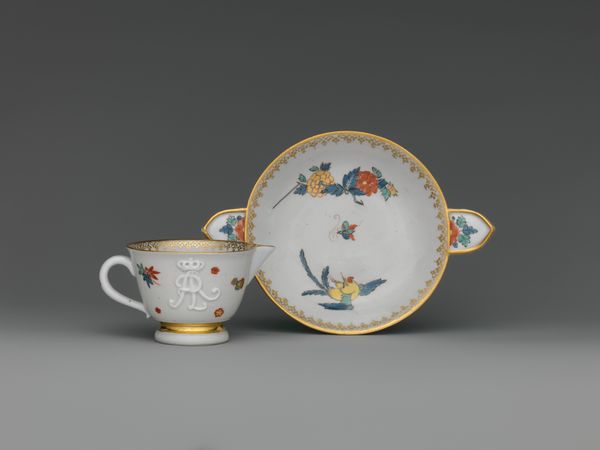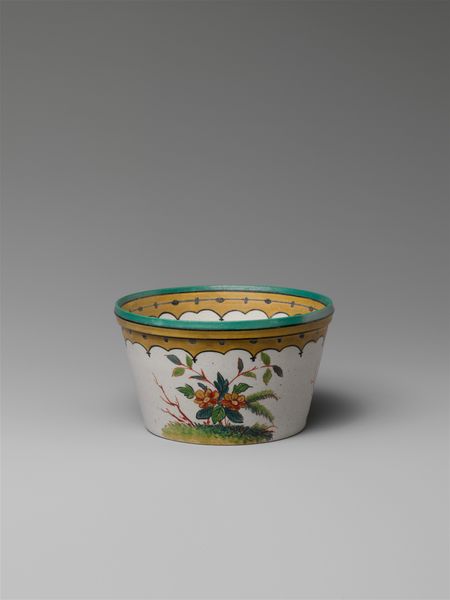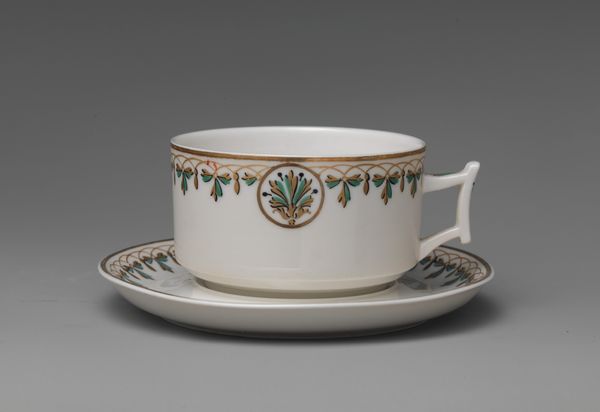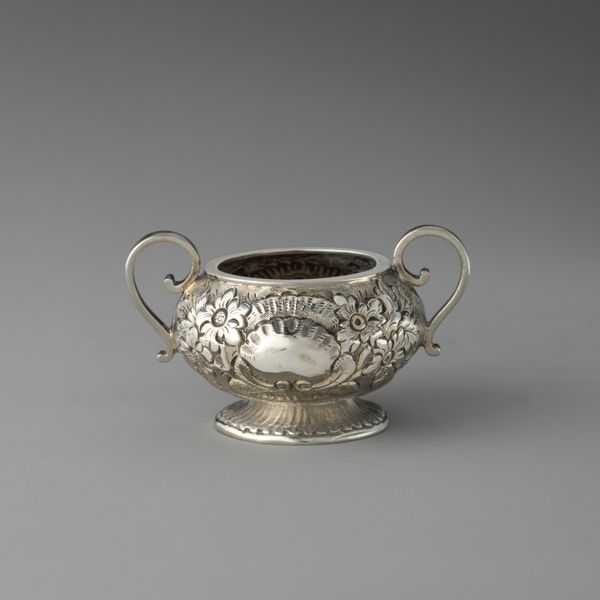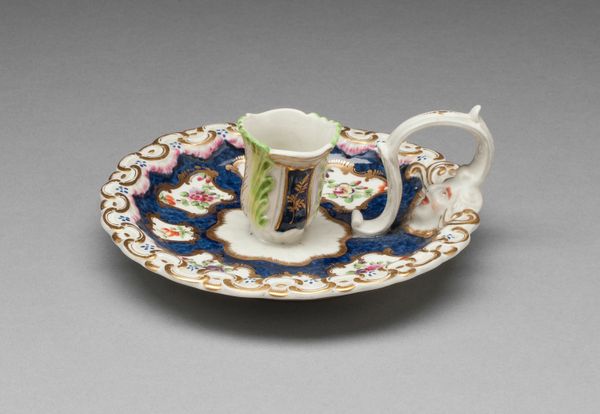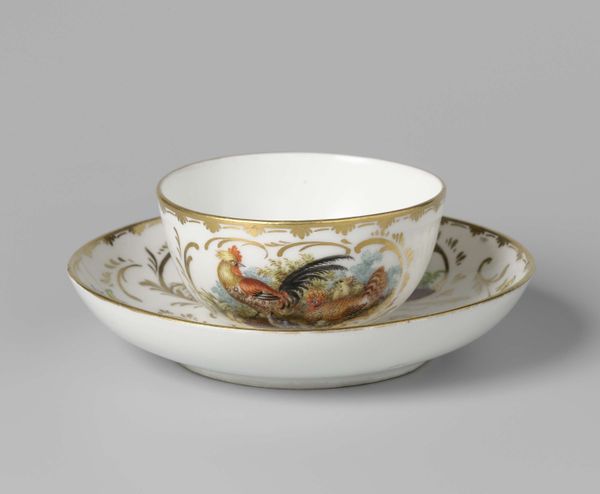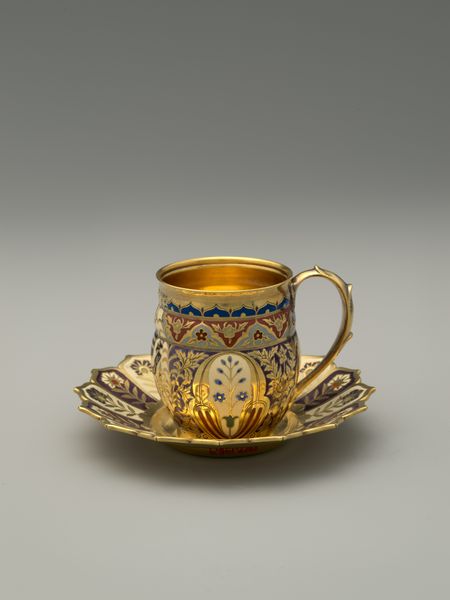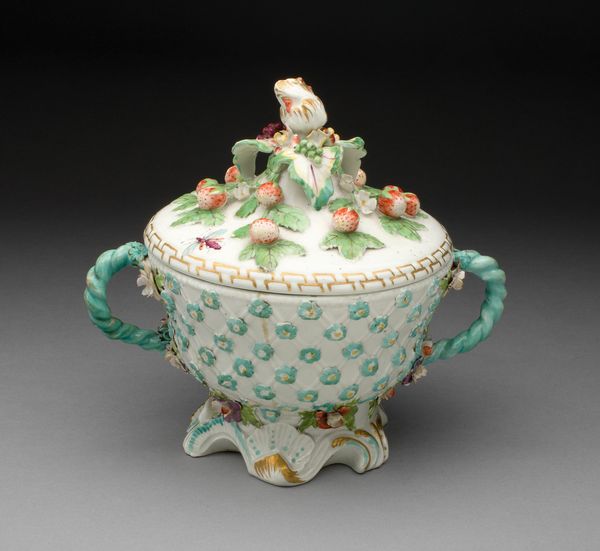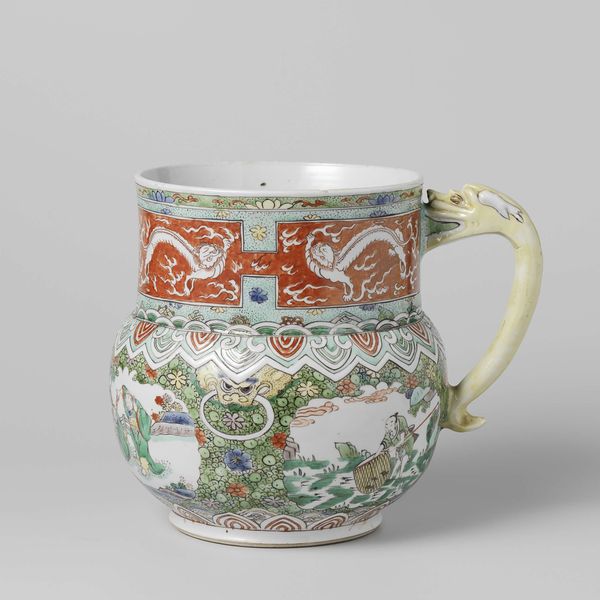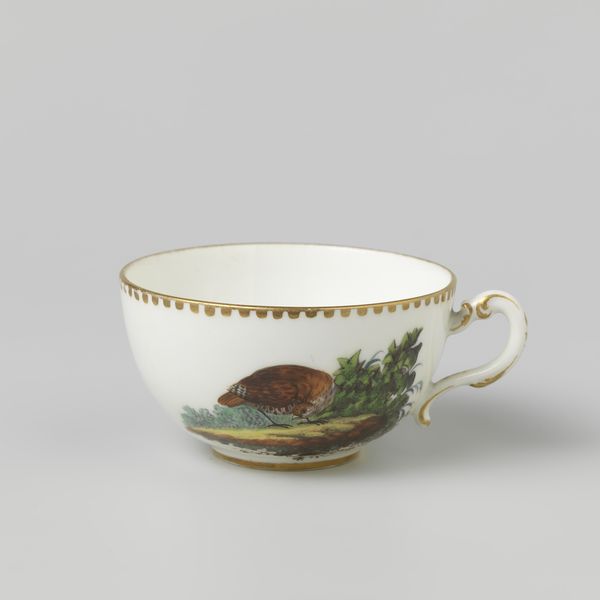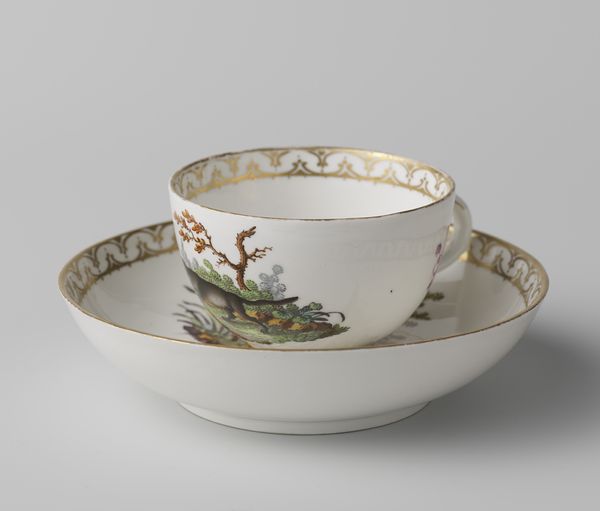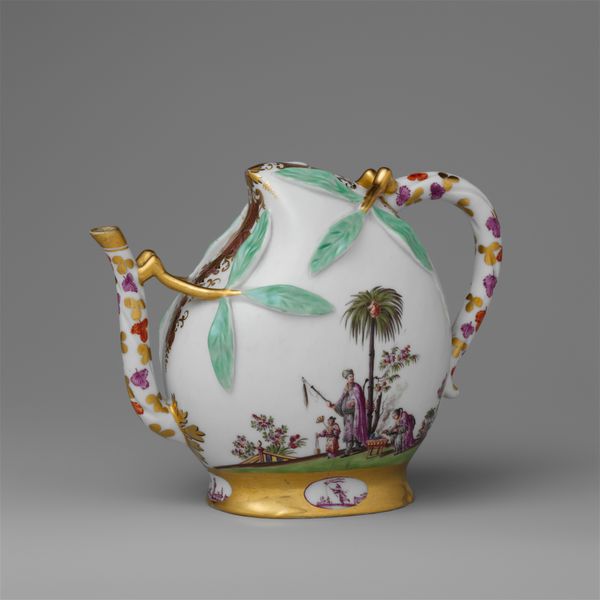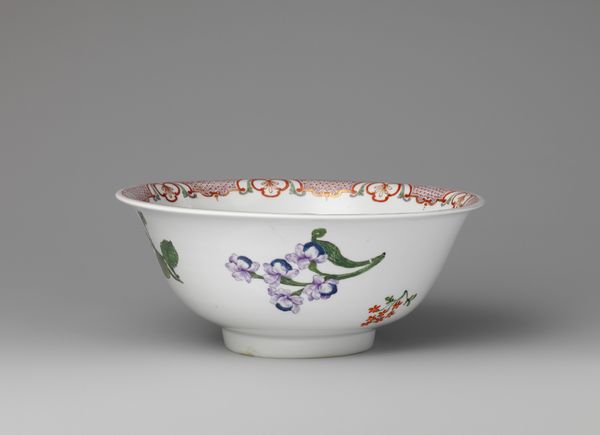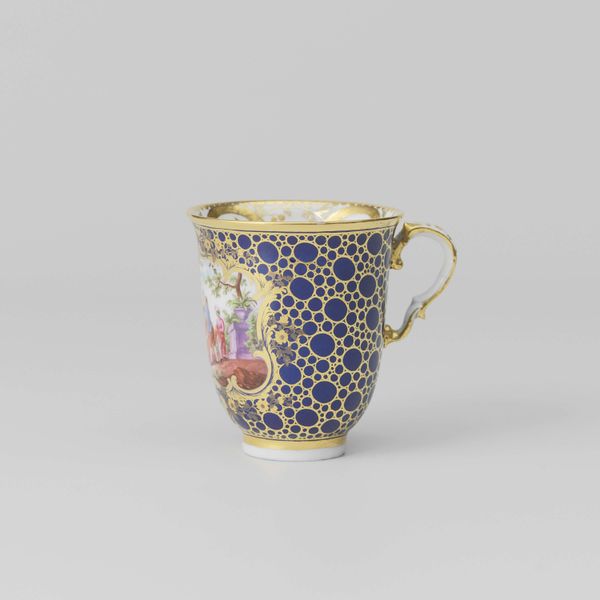
ceramic, porcelain
#
ceramic
#
porcelain
#
orientalism
#
decorative-art
Dimensions: Cup: H. 2 in. (5.1 cm); Diam. 2 7/8 in. (7.3 cm) Saucer: Diam. 5 1/16 in. (12.9 cm)
Copyright: Public Domain
Curator: Here we have a charming teacup and saucer made of porcelain, created by Karl L.H. Müller between 1873 and 1876. It's currently held at the Metropolitan Museum of Art. Editor: It has a whimsical feel! The creamy porcelain paired with the bright green and orange, feels almost like a children’s illustration. And I’m really drawn to the meticulous floral details—though the teacup does look quite small, doesn’t it? Curator: Indeed! This piece reflects the popular "Orientalism" style that was flourishing in Europe at the time. Müller was clearly engaging with and interpreting Asian design sensibilities. We see this reflected both in the motifs of the plant and flower decorations as well as the elegant curvature of the porcelain body. Editor: So, what sort of access would an object like this provide to Asian goods and craft traditions? I suppose this allowed a domestic class to experience a culture previously inaccessible. To what extent did these porcelains offer new opportunities of labour and trade across cultural boundaries? Curator: Good questions. Objects like these provided access and, often, fantasy through carefully orchestrated marketing of a certain vision of the East, filtered through Western eyes. At the same time, these wares demonstrate an openness to adapting and adopting new aesthetics within European manufacture. And of course, they fueled new patterns of consumption for luxury goods. Editor: The materiality also begs the question: where was the porcelain sourced, and who were the makers? It’s interesting to consider how mass production influenced artistic interpretations of Asian aesthetics during that period. We should note this for visitors. Curator: Exactly. The materials, the labour, and the marketplace dynamics all intertwined to give rise to artworks like this. The politics of representation here cannot be denied, right? Editor: A perfect case of decorative art becoming a stage for cross-cultural dialogue, with all the complexities that entails. Thanks for sharing your perspectives! Curator: My pleasure, you too. It highlights the intersection of historical context and artistic creation quite well, doesn't it?
Comments
No comments
Be the first to comment and join the conversation on the ultimate creative platform.
